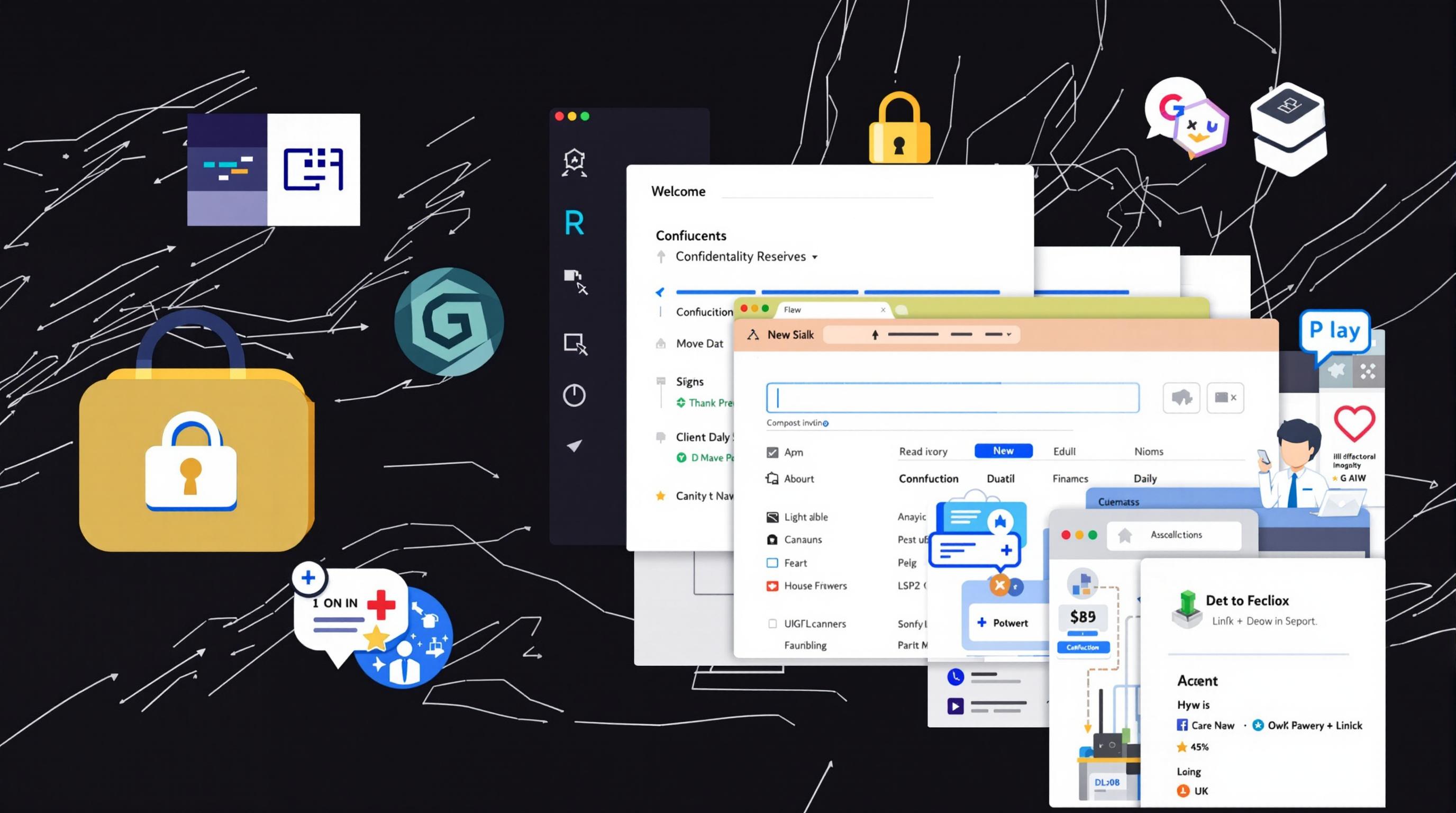Related Articles
- 7 Best Emerging GDPR Tools to Future-Proof Your Data Strategy Beyond Standard Compliance
- 7 Cutting-Edge Franchise Management Softwares Released Since 2019 Ranked for Legal Compliance and Efficiency
- How Forgotten Folklore Influences Modern Privacy Norms and Unexpected Data Protection Practices
- When Silence Speaks: The Unexpected Impact of Cultural Nuances on Confidential Agreement Effectiveness
- Unveiling Unseen Threads: How Franchising Intersects with Environmental Compliance and Green Regulations
- Unraveling the Impact of Cultural Misalignment in Cross-Border Collaborations on Partnership Sustainability
Unveiling the Role of NDA Formats in Protecting AI-Driven Innovations and Data Privacy Compliance
Unveiling the Role of NDA Formats in Protecting AI-Driven Innovations and Data Privacy Compliance
Non-Disclosure Agreement (NDA) formats are essential tools for safeguarding AI-driven innovations and ensuring compliance with data privacy regulations. This article delves into how tailored NDAs protect intellectual property and sensitive data, illustrating their growing importance in the evolving AI landscape.
The Vital Importance of NDAs in AI Innovation Protection
Imagine a startup developing a cutting-edge AI algorithm that predicts health issues from wearable data. Sharing this breakthrough without proper legal protection could lead to ideas being copied or leaked. NDAs help prevent such scenarios by legally binding parties to confidentiality, securing the company’s intellectual property and giving it a competitive edge.
How NDA Formats Adapt to AI’s Unique Challenges
The dynamic nature of AI technologies creates challenges that traditional NDAs might not fully address. For instance, defining "confidential information" in AI contexts isn’t always straightforward—it may include training data, model architectures, source code, or even learned parameters. Hence, NDA templates for AI often incorporate detailed clauses specifying these elements.
Case Study: Google's Use of Robust NDAs in AI Collaborations
Google has been a pioneer not only in AI research but also in setting examples for legal safeguards. When Google partners with external researchers, they use comprehensive NDAs that go beyond standard formats by including stipulations on data usage, privacy, and intellectual property rights. This approach minimizes the risk of proprietary algorithms leaking, thereby maintaining competitive advantage and compliance with data privacy laws such as GDPR.
Data Privacy Compliance Embedded in NDA Clauses
With legislation like the General Data Protection Regulation (GDPR) in Europe and the California Consumer Privacy Act (CCPA) in the U.S., data privacy isn’t just an ethical consideration, it’s a legal requirement. NDAs designed for AI projects often embed clauses that ensure all parties commit to handling data in compliance with these regulations, specifying security measures, data destruction timelines, and permissible data use.
Anecdote: When Casual Non-Disclosure Causes Legal Headaches
Picture a young AI developer in their late twenties who casually shared algorithm details with a friend working at a rival firm—without any NDA. The friend’s company later integrated similar methods, leading to a costly legal battle. This story underscores why even informal conversations around AI innovation need carefully drafted NDAs, tailored to the technology and jurisdiction involved.
Statistical Insight: Rising Litigation Over AI IP Breaches
According to a 2023 report by the Intellectual Property Owners Association, AI-related IP theft cases rose by 35% over the previous five years, illustrating the increasing necessity for clear NDA agreements in this domain. The increased litigation costs emphasize that prevention via robust NDAs is more economical and strategic than reactive legal battles.
Variations in NDA Formats: Standard vs. Customized
While many businesses use standard NDA templates, the AI sector demands customized agreements. Standard NDAs may lack provisions for handling machine learning models, datasets, or derivative works. Customized NDAs include definitions of “confidential information” specific to AI, stipulate non-use clauses preventing reverse engineering, and clarify ownership of improvements derived from shared ideas.
Conversational Insight: Why Not All NDAs Are Created Equal
“You wouldn’t sign a medical waiver for a skydiving trip, right?” jokes Martha, a 45-year-old tech lawyer specializing in AI contracts. She explains how NDAs need to fit the specific field—one size definitely doesn’t fit all. For AI innovators, getting a generic NDA might leave gaps that competitors could exploit if you're not careful.
Protecting AI Algorithms and Trade Secrets
AI algorithms often constitute trade secrets, making them prime assets worth shielding. NDAs delineate responsibilities related to confidentiality and restrict recipients from disclosing or using the information beyond agreed purposes. This protection encourages open collaboration without fear of losing control over proprietary technology.
Example: AI Startup’s Success Thanks to Bulletproof NDAs
A mid-sized AI startup specializing in autonomous vehicle software credits its success partly to airtight NDAs when negotiating with suppliers and partners. These legal agreements prevented leakage of sensitive sensor fusion techniques, enabling them to secure funding and strategic partnerships without intellectual property compromise.
Legal Perspective: Enforcement Challenges and Best Practices
While NDAs are powerful, enforcing them—especially across borders—can be complicated. Jurisdiction-specific language, enforceability clauses, and dispute resolution methods should be carefully incorporated. Legal professionals recommend regular NDA reviews as AI develops, ensuring they remain relevant and effective against new threats or regulatory changes.
Humorous Take: NDAs as Digital Fortresses
If NDAs were superheroes, they’d be “The Confidential Crusaders,” donning cloaks of fine print and wielding signatures instead of swords. Their nemesis? The dreaded “Data Leaker,” lurking to snatch secrets mid-conversation! But fear not—well-crafted NDA formats form an impenetrable shield, keeping the AI fortress safe and sound.
The Future: AI and Evolving NDA Standards
As AI technologies advance, so too will the legal frameworks protecting them. Future NDAs might incorporate automated audit trails, blockchain verification, and adaptive clauses responding to AI’s self-learning nature. The ongoing interplay between legal innovation and AI will likely redefine how confidentiality agreements are constructed and enforced.
Closing Thoughts for Readers Aged 16 to 70
Whether you’re a young computer science student dreaming of your AI startup or a seasoned professional navigating AI partnerships, understanding NDA formats is paramount. These documents not only protect innovations but also honor the privacy rights of individuals whose data fuels AI. Embracing this knowledge helps foster trust, collaboration, and ethical progress in one of the fastest-evolving fields today.



